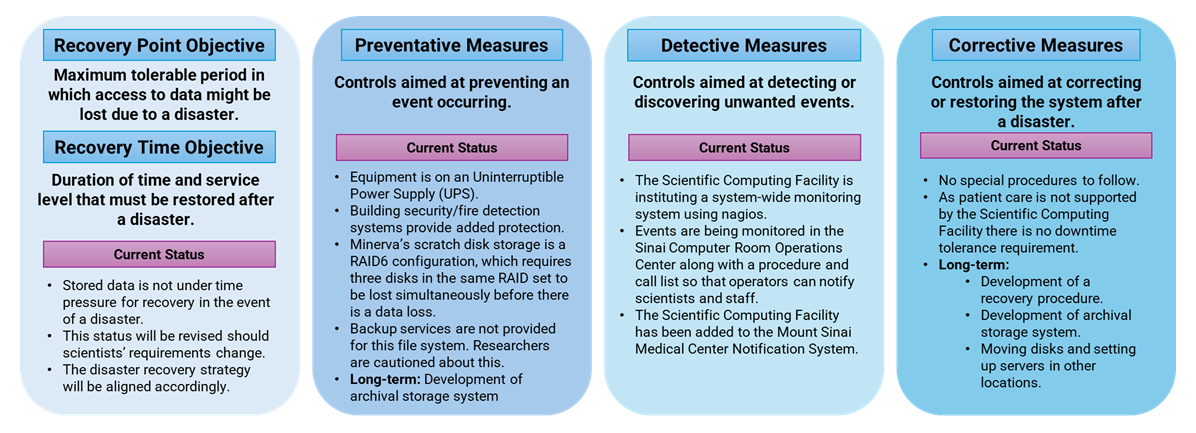Scientific Computing and Data / High Performance Computing / Policies / Disaster Recovery Plan
Policies
- Acknowledgements
- Acceptable Use
- Consulting Services
- Fee and Schedule Policy
- Disaster Recovery Plan
- HIPAA
- Mount Sinai Code of Conduct
Disaster Recovery Plan
- The Scientific Computing Facility consists of the Minerva supercomputer. Scientists in the medical school use this facility for research only.
- The Scientific Computing facility is in the process of developing a Disaster Recovery Plan, outlining policies, procedures, and responsibilities to recover IT systems and data in the event of a disaster, ensuring research continuity.
- The Plan consists of four parts: the recovery point and time objectives, preventative, detective and corrective measures and is described in greater detail in the figure below.

- This plan will be updated twice a year, evolving in response to updated requirements and new resources.
